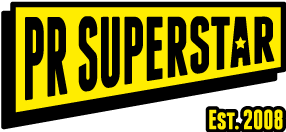
How to Create a Brand Communication Strategy
What is a brand communication strategy and why do you need one?
A brand communication strategy is the process of achieving your objectives through communication. It includes the message: what needs to be said; the medium: using the most appropriate channels to convey the message; and the target: identifying and understanding your key audience.
The importance of brand communication

Whether you’re a start-up or multinational, good communication is essential for any organisation and key to running a successful business. If customers like the way a brand communicates with them, they’re much more likely to purchase its products or services.
The good news? It’s now easier than ever for organisations to communicate with their audiences. Social media channels ensure businesses can have a two-way conversation with their customers in a way that just wasn’t possible twenty years ago. Brands are no longer talking at customers: they’re talking with customers. And every article, blog post, tweet or video is an opportunity to communicate with your customers and build brand loyalty.
So what’s the bad news? There’s a lot of noise and the information streams are never-ending. It’s easy for brands to get lost in the din. And with so many channels of communication available, it’s can be hard to cut through the chatter and reach your audience. Hard but not impossible.
And that’s where a comprehensive brand communication strategy comes in.
With a strategic brand communication plan in place, you have a clear step by step guide as to how to connect with your audience, the key messages to use and how to measure your success.
The 8-step guide to creating a brand communication strategy
1. Define Your Objectives

Before you create any kind of brand communication road map, it’s important to know where you’re heading and what your final destination is. What are your objectives? What is it you want to achieve?
Your objectives should be the foundation of any kind of business planning and may include:
- Creating brand awareness
- Repositioning the brand
- Improving productivity
- Improving business reputation
- Building brand loyalty
- Improving customer service
- Creating demand and increasing sales
- Improving profitability
- Employee attraction and retention
- Change management
- Staying ahead of the competition
And you need to be SMART about your objectives too. So they must be:
- Specific
- Measurable
- Achievable
- Relevant
- Time-based
Define your short-term and long-term objectives and ensure your business is always moving towards them.
2. Understand your target audience

The next step is to define and understand your target audience. Audience segmentation used to be simple. Male or female. Occupation. Age. Location. But these days consumer behaviours, working patterns, interests, even devices used, such as smartphones, laptops, and tablets, and how information is consumed, for example, news channels, social media and apps, all play a key role in audience differentiation.
Steps for identifying your target audience:
Understand your customers problems
What problem do you solve for your customers? When you identify what problem it is you’re solving, then you can understand who is most likely to experience these problems.
Create a picture of your target audience
List all the types of customers whose problems you solve. Then look for things they have in common. For example, the age range of your target audience may be wide, but based on your research you discover they’re all likely to have a garden and like animals. The creation of an audience persona will help define your communication style and channels used.
Think about niche audiences
Digital communications enable you to deliver an incredibly personalised experience. A campaign aimed at women golfers over the age of 60, which includes messaging that appeals to that very specific audience, will reap greater rewards than a generic ‘all golfers’, ‘all women’, or ‘everyone over 60’ message.
3. Look at your current Situation

Before you put start planning your comms strategy, it’s vital to take stock of where you are right now and look at how you currently communicate with your target audience. There are numerous tools for analysing your current situation including SWOT which is simple to use and tried and tested.
SWOT looks at strengths, weaknesses, opportunities and threats. So ask:
- What are our communication strengths? What are we doing well?
- How about our communication weaknesses? What could we be doing better?
- What are the opportunities that would make our communications better? Are there different channels we could or should be using?
- And are there threats to the way we communicate?
Look at how internal factors affect your business. But also analyse how external factors affect your business too such as the economy, the political landscape or global events like a pandemic.
4. Define your unique selling proposition (USP)

What’s that one thing, or USP, that makes you stand out from the crowd? Ask the question: why would a customer choose our brand, product or service over a competitor’s? It could be the quality of the product, the personality of the brand, the customer service you offer, your corporate social responsibility, or your processes. For example, Dollar Shave Club’s USP is delivering men’s shaving and personalised grooming products directly to your door.
Steps for defining your USP:
Make it unique
This goes without saying. Your USP has to be something that no-one else is offering.
Make it desirable
It has to be something your target audience cares about; something that appeals to a specific audience and satisfies a particular problem they have.
Keep it short and sweet
In an ideal world, your USP should be summarised in one sentence. Can your USP also be used as a headline or strapline? Sometimes. Your USP is a concept but the essence of it should certainly be communicated throughout all your marketing materials.
Avoid fluff and jargon
Your USP should be easy to understand by everyone in the company as well as your customers.
Be specific
Don’t describe a product as time-saving, but spell out how much time it saves. That’s your USP.
Once your USP is established, it should be reflected in some way in all your PR and marketing messaging across all your communication channels, so that it’s instantly recognisable as belonging to your brand.
5. Research Your Competitors

When it comes to communications, it’s important to know what your competitors are up to.
Take a look at how they’re communicating with their audience to fully understand the market and then do something even better that’s fresh and exciting.
Also examine their website and how they communicate with their customers throughout the purchase process. Look at pricing, shipping, returns. Also investigate their ad campaigns, PR activity and social media channels. How are they using social? Is there a channel your competitors aren’t using yet? Would it suit your audience? Are you and your competitors all doing the same thing because that’s what companies in your sector have always done? What would happen if your business did something completely different? Don’t be scared to disrupt the landscape.
And find out what hasn’t worked so well for your competitors, so you can avoid making the same mistakes.
6. Think about your branding

Your branding needs to be consistent across all your marketing materials and touchpoints, and have the same look and feel, if you want to deliver a powerful brand message.
So the colour palette, typeface, logo and tone of voice must be the same across your:
- Website
- Sales brochures
- Social channels
- Apps
- Ad campaigns
- Business cards
- In-store promotional materials etc.
Finding the right tone of voice
Your tone of voice should resonate with your audience whether that’s customers or employees.
Have real conversations
As mentioned above, you need to speak with your audience not at your audience. Develop genuine and personal dialogue with your audience that demonstrates your willingness to help or solve a problem.
Be honest
Customers are savvy and know when a brand is being inauthentic or dishonest. Be true to your USP and don’t try to be something you’re not just for the likes. Let your customers know what’s going on even if things have gone wrong. That way, they’re far more likely to trust you.
But your branding isn’t just about colours, fonts and tone of voice though. At a deeper level, your branding is also about your identity as a business and what you stand for. What is your corporate social responsibility position? What do employees say about working for your business? This is also part of your branding and needs to be part of any marketing communications you send out.
7. Identify your channels

Next you need to identify the communication channels you’re going to use to reach your target audience. There’s no point creating TikTok videos if your target audience is retired. But it may be the right channel if you’re targeting Generation Z. It’s important to know and understand all the options available so you can prioritise the channels that are most likely to achieve your objectives.
Whether that’s social media, an ad campaign, PR activity or an in-store promotion, as we’ve seen above, it’s essential to use the same brand voice across all touchpoints.
Communication channels include:
- Online: website, enewsletter, podcasts, blogging, webinars, retargeting, pay-per-click ads, Facebook ads, email marketing, content marketing
- Social media: Facebook, LinkedIn, YouTube, Google Business, Twitter, Instagram, working with social media influencers.
- Offline: brochures, packaging, promotions, billboards, TV ads, white papers, press advertising, radio ads, signage, direct mail
- Public Relations: news releases, interviews, sponsorships, speaking events, conferences
- Internal: intranet, email, internal communication platforms, employee collaboration software.
Like any business, it’s likely you’ll use a number of channels to communicate your message.
8. Establish your metrics for measuring success

How will you know if your brand communications strategy is successful?
When putting together your strategy, you need to make sure metrics are in place for evaluating your success and ensuring you’re reaching your key objectives, such as brand awareness or more sales. These successes will be measured differently depending on the channel used. For instance, success on your social media channels will be measured differently to the success of your PR efforts.
Your key metrics may include:
- Mentions on different news outlets
- Backlinks to your website
- Website visits from social media shares
- Leads acquired
- Conversion rates
- Increased customer satisfaction (through reviews, ratings, testimonials)
- Telephone or website enquiries
- White paper downloads from your website
- Comments on your videos or social channels
- Increase in subscribers.
Be clear from the outset how you’re going to measure your results. Then closely monitor the data to ensure your communications strategy is working.
Summary: Your brand communication strategy template
Your brand communication strategy summarised.
Define your objectives
Establish where you are as a business and where you want to go.
Target Audience
Use customer insights to identify your target audience and the communication style needed to reach them. Think about what problems you solve for your audience and then create a picture or buyer persona. Also think about niche audiences.
Current Situation
Look at the inner workings of your business and your current communications. What are you doing well? What could be better? Also look at external factors too like the political landscape, the economy and global events like the pandemic.
Define your USP
Uncover what makes your business different. Make your USP unique, desirable, short and sweet, jargon-free and specific.
Research your competitors
Look at the marketing and PR activity of your competitors to see what they’re doing and saying on their website and social media channels. Understand what’s working for them and what isn’t. And then do something that’s even better.
Look at your branding
Ensure your colour palette, typeface, logo and tone of voice are consistent across all your marketing materials and touchpoints.
Identify your communication channels
Look at your target audiences and identify the most appropriate mix of communication channels to use in order to reach that audience.
Measure your success
Ensure you reach your key objectives by putting metrics in place for evaluating the success of your marketing and PR efforts.







